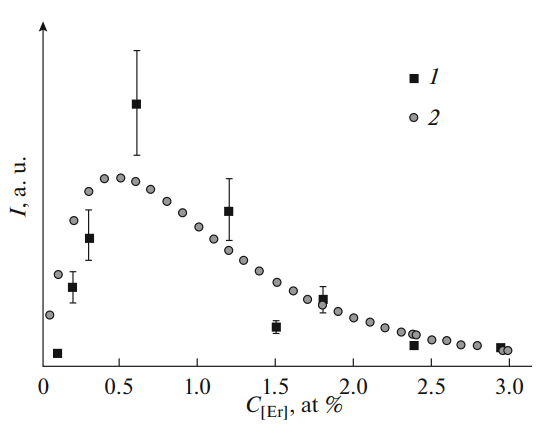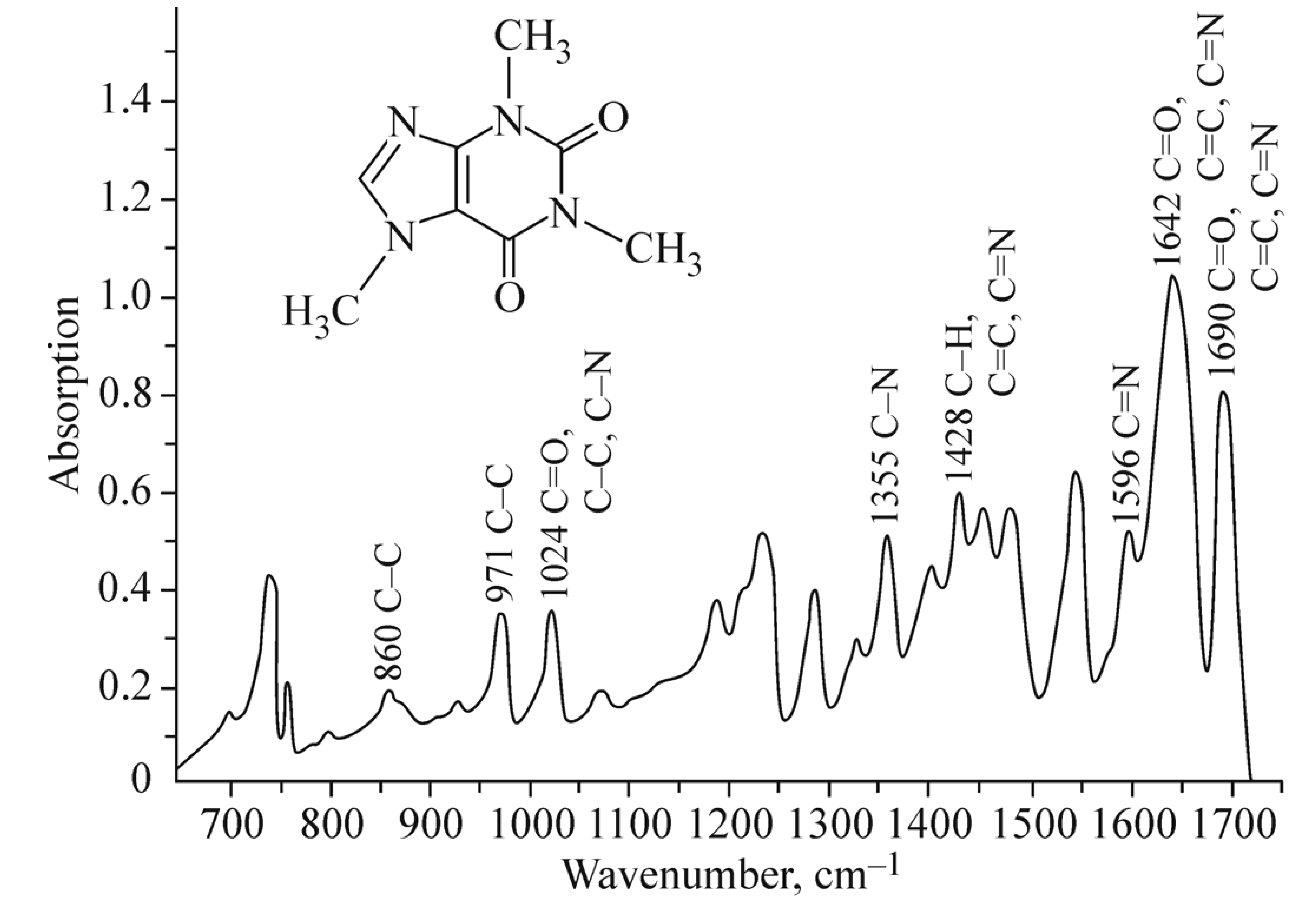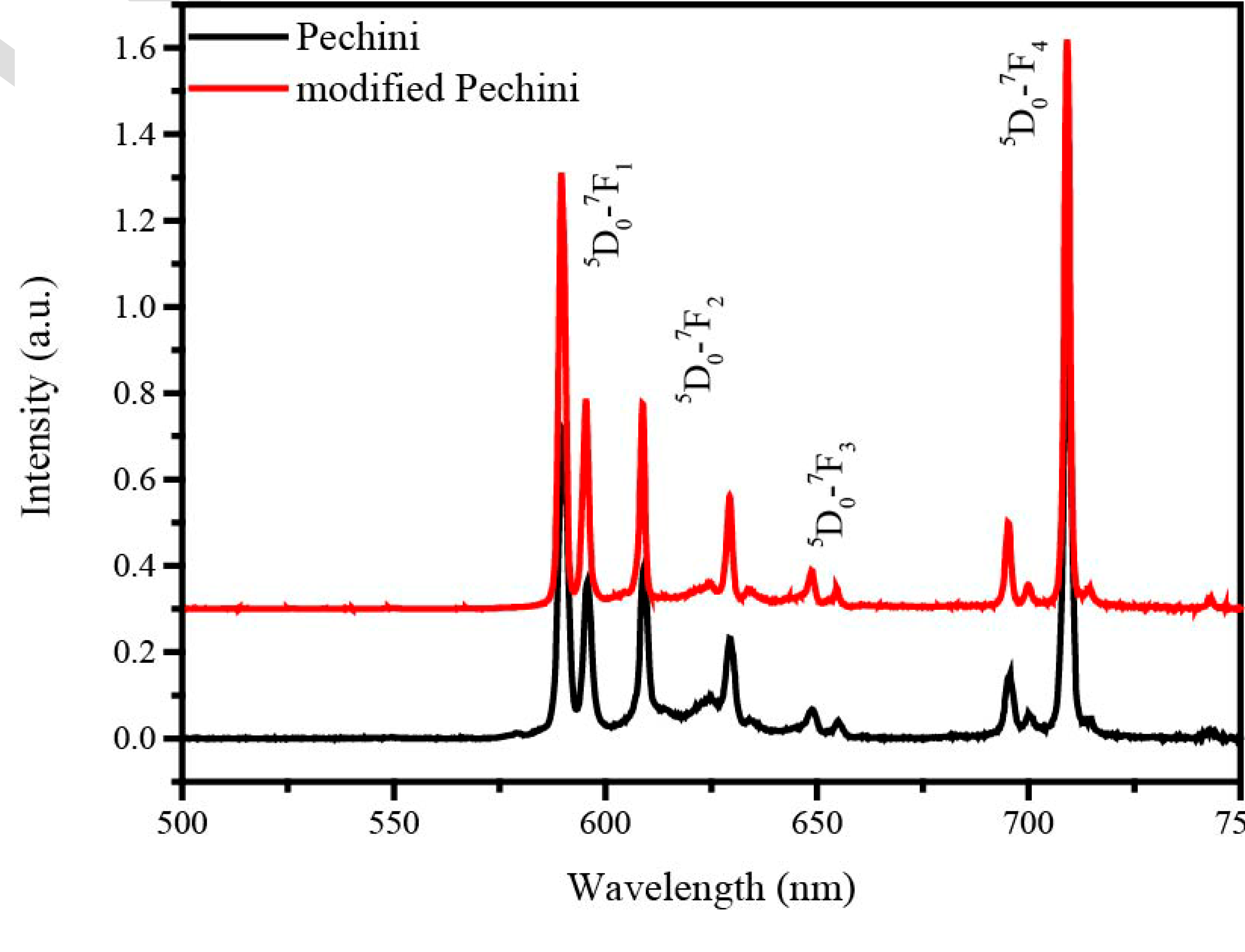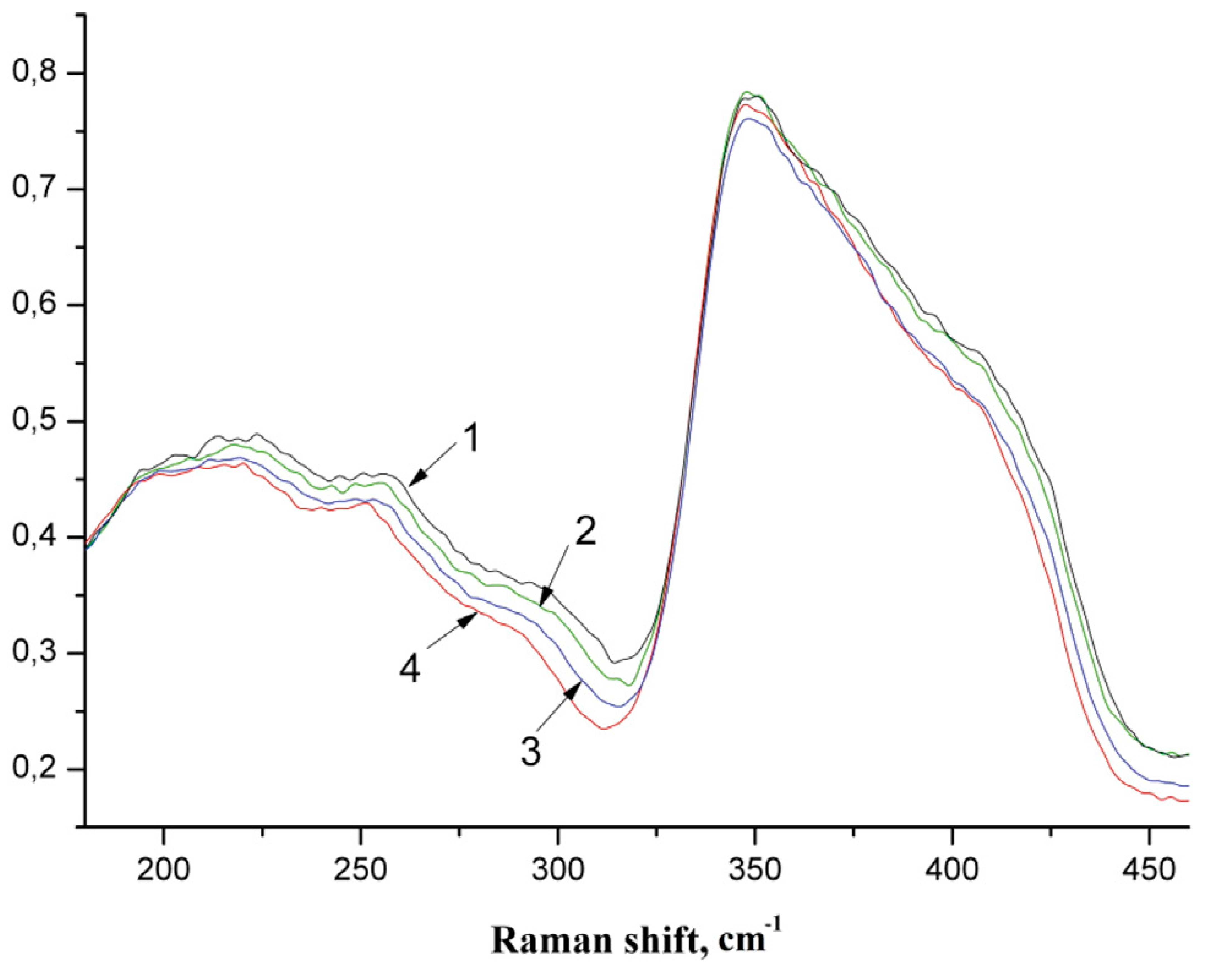Posted in Новости
Glass Physics and Chemistry, 2017, Vol. 43, No. 4, pp. 298–301
A. A. Razumtsev, Yu. S. Tver’yanovich, Fahd S. Khan, I. E. Kolesnikov, and A. V. Kurochkin
«Spectral Properties of Glass (15Ga2S3 · 85GeS2) Doped with Erbium»
Glass Physics and Chemistry, 2017, Vol. 43, No. 4, pp. 298–301
DOI: 10.1016/j.jnoncrysol.2016.11.038

For chalcogenide glasses in the system (1 – x)[0.15Ga2S3 · 0.85GeS2] · xEr2S3, the absorption and luminescence spectra are investigated and the X-ray diffraction analysis is performed. A small shift in the position of the erbium absorption band with the increase of its content in the glass indicates the decrease of the effective charge on it, while the negligible changes in the angle position of the first sharp diffraction peak points to the constancy of the glass’s intermediate-order parameter. The possibility of describing the dependence of the intensity of erbium luminescence on its concentration using the earlier suggested equation has been discussed.
Posted in Новости
17.03.2017 a visit of the staff of the Department of Scientific and Technical Expertise of the State Hermitage took place in the RC OLMIV: Gavrilenko L.Yu., Grigorieva I.A., Chugunova K.S. and Audrikovskaya A.Yu. Issues of scientific and technical cooperation were discussed.

Posted in Новости
Journal of Structural Chemistry. Vol. 58, No. 2, March 2017, pp. 399-405
S. V. Paston, A. M. Polyanichko, O. V. Shulenina
STUDY OF DNA INTERACTIONS WITH Cu2+ AND Mg2+ IONS IN THE PRESENCE OF CAFFEINE
Journal of Structural Chemistry. Vol. 58, No. 2, March 2017, pp. 399-405
DOI: 10.1134/S0022476617020263

A study of caffeine effects on the complexation of the DNA molecule with Cu2+ and Mg2+ ions in solution is presented. DNA binding with cations and caffeine is traced from changes in DNA circular dichroism and UV absorption spectra. The complexation of caffeine with M2+ ions is studied by IR spectroscopy. Caffeine is found to form complexes of different structure with Mg2+ and Cu2+ ions in solution. In the presence of caffeine, DNA solutions with MCl2 show signs of formation of intricate complexes involving nitrogenous bases. In DNA solutions with CuCl2, the presence of caffeine causes additional destabilization of the secondary DNA structure. In DNA solutions with MgCl2, the presence of caffeine leads to the formation of new complexes with the participation of Mg2+, caffeine, and bases without disrupting the secondary DNA structure.
Posted in Новости
Materials Chemistry and Physics Volume 189, March 2017, Pages 245-251
D.V. Mamonova, I.E. Kolesnikov, A.A. Manshina, M.D. Mikhailov, V.M. Smirnov
Modified Pechini method for the synthesis of weakly-agglomerated nanocrystalline yttrium aluminum garnet (YAG) powders
Materials Chemistry and Physics Volume 189, March 2017, Pages 245-251
DOI: 10.1016/j.matchemphys.2016.12.025

Modification of Pechini method for synthesis of weakly agglomerated yttrium aluminum garnet powder has been presented. Modified synthesis procedure is based on an additional calcination process in KCl melt at 1000 ˚C and allows obtaining weaker agglomeration of nanoparticles. Structure, morphology and particle size have been defined using scanning electron microscopy technique, X-ray diffraction, and static light scattering. Adsorption ability of powders has also been studied. Diffraction patterns of samples confirm existence of only one YAG phase; the average size of particles is about 200 nm. The size of coherent-scattering regions was determined to be 40−50 nm. Steady-state luminescence properties and lifetimes of nanocristalline YAG:Eu3+ powders synthesized by standard and modified Pechini techniques were compared.
Posted in Новости
Journal of Non-Crystalline Solids Volume 457, February 2017, Pages 164-168
D.V. Pankin, М.V. Sukhanov, Yu.S. Tveryanovich, М.F. Churbanov
Investigation of structure of GeS1.35 glasses with the use of isotopically enriched germanium and Raman scattering spectroscopy
Journal of Non-Crystalline Solids Volume 457, February 2017, Pages 164-168
DOI: 10.1016/j.jnoncrysol.2016.11.038

The samples of GeS1.35 glasses were synthesized with germaniumand sulfur of natural isotopic composition and with isotopically enriched germanium (72Ge, 74Ge, 76Ge). The glasses were investigated by the method of Raman scattering spectroscopy (RSS). It was shown that GeS4/2 tetrahedrons and structural units containing Ge-Ge homobonds are present in glasses. The quantum-mechanical calculation of the frequency of fundamental vibrational modes in glass network was carried out. Their dependencies on the atomic mass of germanium were used for identification of bands in RS (Raman scattering) spectra.

 English (UK)
English (UK)  Русский (РФ)
Русский (РФ) 



